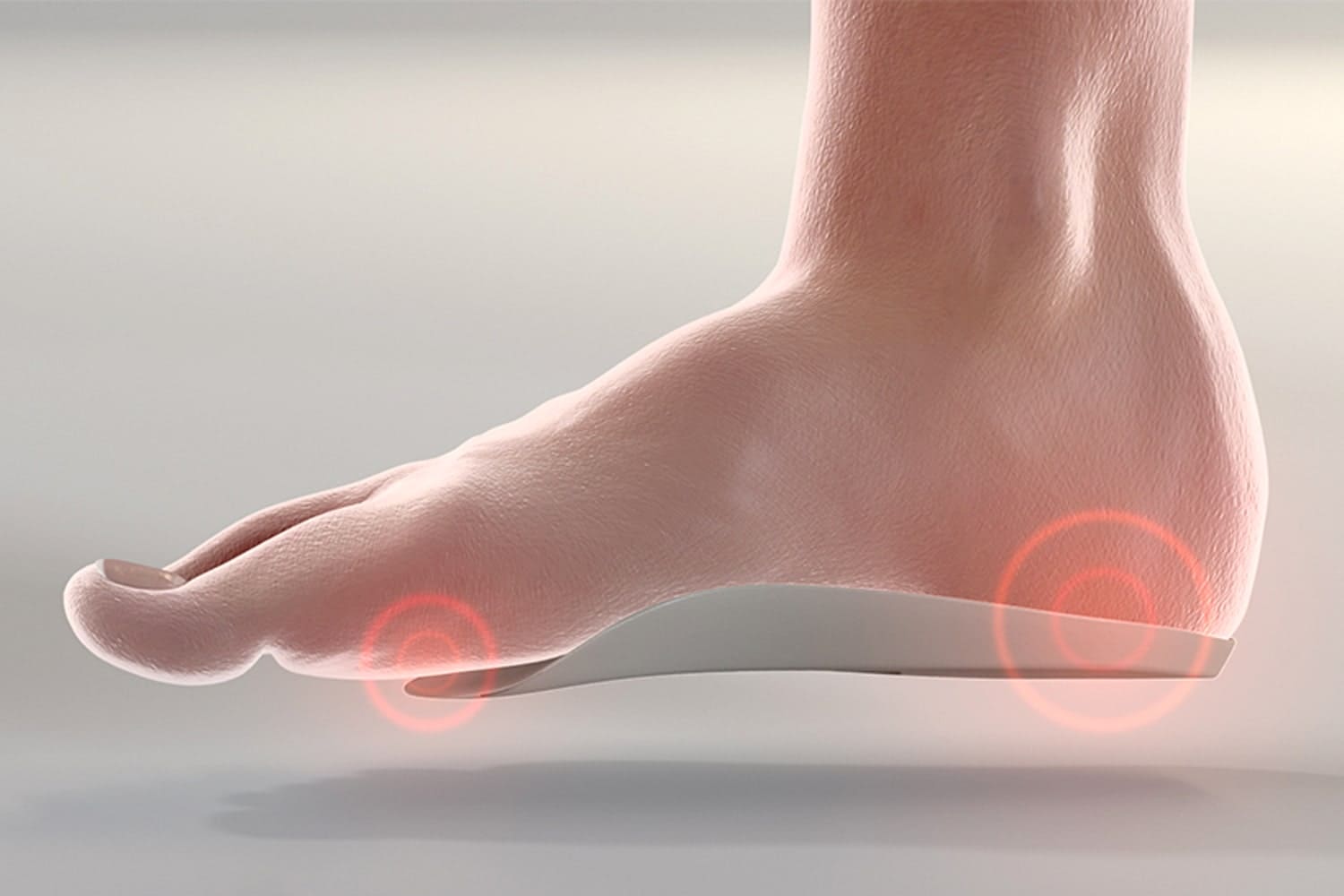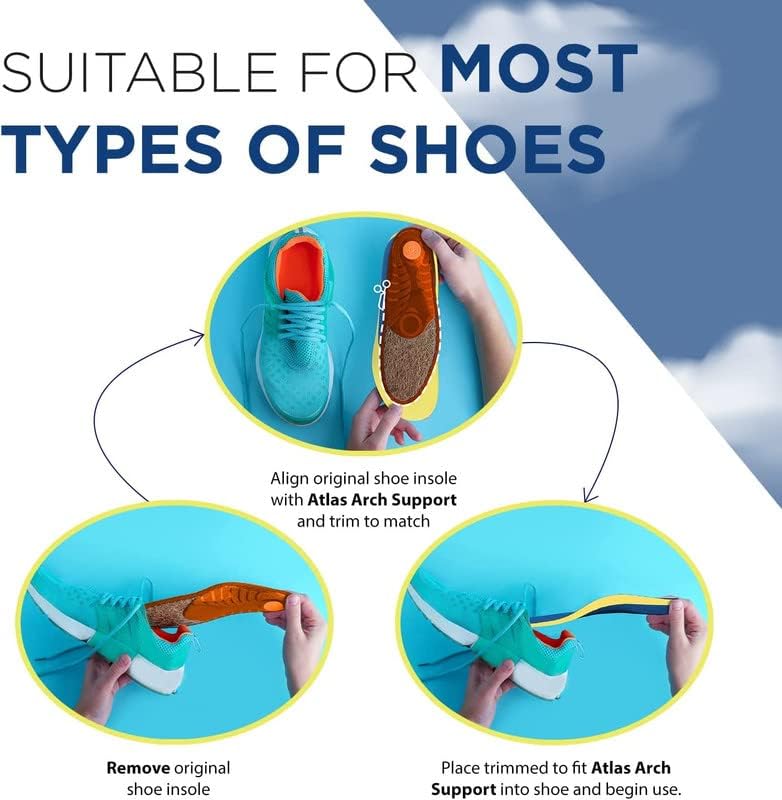Introduction
Flat feet, or low arches, can be a significant source of discomfort and pain for many individuals. Recognizing the importance of proper arch support is crucial in addressing issues associated with flat feet. This comprehensive guide aims to delve into the significance of arch support and offers practical tips to enhance comfort and overall foot health.
Table of Contents
Understanding Flat Feet
What are Flat Feet?

result from various factors such as muscle or ligament damage, aging, obesity, or certain medical conditions. The absence of a distinct arch can lead to biomechanical imbalances, impacting the distribution of weight and potentially causing discomfort or pain.
Stay tuned as we delve deeper into the causes, symptoms, and effective management strategies for flat feet. Understanding this common condition is essential for maintaining foot health and overall well-being.
Common Issues Associated with Flat Feet
Individuals with flat feet may experience a range of issues due to the biomechanical changes associated with this condition. Here are some common problems:
- Overpronation: Flat feet can lead to overpronation, where the feet roll excessively inward during the natural gait cycle. This altered mechanics can affect the alignment of the lower limbs.
- Foot Fatigue: People with flat feet often report fatigue and discomfort after extended periods of standing or walking. The lack of a supportive arch can contribute to increased strain on the feet.
- Joint Pain: Flat feet may contribute to joint pain, particularly in areas such as the ankles, knees, and lower back. The altered weight distribution and biomechanics can impact various joints throughout the body.
Understanding these issues is crucial for individuals with flat feet, as it informs the need for appropriate support and interventions to address discomfort and prevent potential complications. Stay tuned for insights into the importance of arch support and practical tips for managing flat feet.
Importance of Arch Support for Flat Feet
Proper arch support is a crucial factor in mitigating the challenges posed by flat feet. The next sections will explore ways to provide the necessary support for enhanced comfort and overall foot health.
Stay tuned for practical tips, including choosing the right footwear, utilizing custom orthotics, engaging in targeted exercises, and incorporating everyday habits to support individuals with flat feet.
Alleviating Discomfort
Proper arch support is a crucial factor in reducing the discomfort commonly associated with flat feet. By providing the necessary support, weight distribution becomes more even, helping to mitigate the strain on various parts of the foot. This targeted support addresses issues such as overpronation, where the foot rolls excessively inward, and helps maintain a more natural alignment during movement.
The benefits of arch support extend beyond immediate relief, contributing to long-term foot health. Individuals with flat feet can experience enhanced comfort, reduced fatigue, and a lower risk of developing complications associated with improper foot mechanics. In the following sections, we’ll delve into practical tips and solutions, including choosing the right footwear, incorporating custom orthotics, engaging in targeted exercises, and adopting everyday habits that support individuals with flat feet.
Supportive Insoles and Footwear
Investing in footwear specifically designed with supportive insoles is a practical and effective solution for individuals with flat feet. These insoles are crafted to complement the natural arch of the foot, offering stability and cushioning where it is needed most. By providing targeted support to the arch, these insoles help alleviate discomfort associated with flat feet, promoting better weight distribution and alignment.
When selecting shoes for flat feet, look for those that explicitly mention arch support in their design. Additionally, prioritize options with ample cushioning to help absorb shock and reduce impact on the feet. Stability features in shoes are also beneficial, as they aid in preventing overpronation, a common issue with flat feet. The combination of supportive insoles and well-designed footwear contributes to a more comfortable and supportive experience, addressing the specific needs of individuals with flat feet.
Choosing Supportive Footwear
When selecting shoes for flat feet, consider the following features:
- Arch Support: Look for shoes that explicitly mention arch support in their design. Proper arch support helps maintain the foot’s natural shape, providing stability and reducing strain on the arches.
- Cushioning: Choose shoes with ample cushioning to absorb shock and reduce impact on the feet. Cushioned soles provide additional comfort and support, especially beneficial for individuals with flat feet who may experience increased pressure on certain areas.
- Stability Features: Options for shoes with stability features to help prevent overpronation, a common issue associated with flat feet. Stability features contribute to a more balanced gait and can alleviate stress on the ankles, knees, and lower back.
By prioritizing these features in your footwear selection, you can enhance comfort, provide necessary support, and address the specific challenges associated with flat feet. Always try on shoes to ensure a proper fit and consider consulting with a footwear specialist for personalized recommendations.
By incorporating supportive insoles and footwear into your daily routine, you take a significant step toward alleviating discomfort and fostering better foot health.
Stay tuned for more insights on improving stability, posture, and additional measures to enhance the well-being of individuals with flat feet.
Improving Stability and Posture
Arch support plays a pivotal role in enhancing stability and promoting better overall posture, especially for individuals with flat feet. The benefits extend beyond mere comfort, actively contributing to preventing additional stress on joints and muscles.
Enhanced Stability
Flat feet can lead to instability in the feet and ankles, affecting your balance and increasing the risk of injuries. Arch support acts as a stabilizing force, providing the necessary structure to prevent excessive side-to-side movement and ensuring a more secure footing.
Improved Posture
Maintaining proper posture is a holistic approach to musculoskeletal health. Without adequate arch support, individuals with flat feet may adopt compensatory movements that contribute to poor posture. Over time, this can lead to strain on the lower back, hips, and knees.
The Role of Arch Support
- Alignment: Arch support helps align the foot, ankle, and lower leg in a more optimal position, reducing the likelihood of postural issues.
- Weight Distribution: By evenly distributing the weight across the foot, arch support minimizes the impact on specific areas, reducing the risk of muscular imbalances that can affect posture.
- Joint Support: Proper arch support provides support to joints, preventing excessive stress and strain that can occur when the arches are not adequately supported.
Taking Proactive Measures
Incorporating shoes with built-in arch support, along with exercises targeting postural muscles, can significantly contribute to improving stability and posture. As we continue exploring comprehensive strategies for flat feet, stay tuned for tips on choosing the right footwear and engaging in targeted exercises.
Choosing the Right Footwear
Selecting the appropriate footwear is a crucial step in managing and supporting flat feet. The right shoes can make a significant difference in providing comfort, stability, and the necessary arch support.
Look for Arch Support Features
When shopping for shoes tailored to flat feet, pay attention to the following arch support features:
1. Built-in Arch Support
Prioritize shoes explicitly designed with built-in arch support. This feature ensures that the natural arch of the foot is adequately supported, reducing strain and discomfort.
2. Firm Midsole
A firm midsole provides structural support, preventing the collapse of the arches. It contributes to maintaining a stable foundation for the feet, especially important for individuals with flat feet.
3. Cushioning
Ample cushioning is essential for shock absorption, reducing the impact on the feet during walking or standing. Look for shoes that offer sufficient padding to enhance overall comfort.
Stability Shoes
Consider opting for stability shoes, a specialized category designed to address overpronation and provide additional support. These shoes often feature:
1. Pronation Control
Stability shoes are engineered to control pronation, the excessive inward rolling of the foot. This control helps maintain a more natural gait and prevents strain on the arches.
2. Reinforced Structure
Brands typically label stability shoes, making them easily identifiable. Look for terms like “motion control” or “stability” when choosing footwear to ensure you’re selecting a pair designed to provide the necessary support.
By prioritizing these features, you’re actively taking steps to support your flat feet and promote overall foot health. In the upcoming sections, we’ll explore additional measures, including the benefits of custom orthotics and targeted exercises for strengthening arch muscles.
Custom Orthotics for Personalized Support
Benefits of Custom Orthotics
For individuals grappling with persistent issues related to flat feet, custom orthotics emerge as a highly effective solution. These orthotic inserts are uniquely crafted to offer tailored support, addressing the specific contours and concerns of your feet.
1. Personalized Comfort
Custom orthotics provide a level of comfort that is unmatched. The individualized molding ensures a perfect fit, offering support precisely where it’s needed.
2. Targeted Support
Designed to address your unique foot structure and concerns, custom orthotics deliver targeted support to alleviate issues such as overpronation, arch collapse, and joint strain.
3. Enhanced Shock Absorption
The materials used in custom orthotics are chosen to enhance shock absorption, reducing the impact on your feet and minimizing discomfort during daily activities.
Consultation with a Professional
Before opting for custom orthotics, it is crucial to consult with a healthcare professional. A podiatrist or orthopedic specialist can provide a comprehensive assessment of your feet, considering factors like arch type, gait, and any existing issues.
Steps for Obtaining Custom Orthotics:
- Professional Assessment: Schedule a consultation with a podiatrist or orthopedic specialist for a thorough assessment of your feet. This professional will evaluate your foot structure, gait, and any specific conditions or concerns.
- Molding Process: If custom orthotics are deemed necessary, the specialist will initiate the molding process. This may involve taking molds or scans of your feet. The goal is to create a precise and personalized fit that addresses your unique foot characteristics.
- Recommendations: Following the assessment and molding process, the healthcare professional will provide recommendations. This includes identifying the most suitable type of custom orthotics tailored to your specific needs. The recommendations may consider factors such as arch support, cushioning, and any existing foot conditions.
- Fitting and Adjustment: Once the custom orthotics are crafted, you will go through a fitting process. The specialist will ensure that the orthotics align correctly with your footwear and make any necessary adjustments for optimal comfort and support.
- Follow-up Consultations: To monitor progress and address any concerns, follow-up consultations may be scheduled. These appointments allow for adjustments, ensuring that the custom orthotics continue to provide effective support.
By following these steps and collaborating with a qualified healthcare professional, you can obtain custom orthotics that cater to your unique foot anatomy and contribute to improved comfort and foot health.
Exercises for Strengthening Arch Muscles
- Toe-Tapping: Regularly perform simple toe-tapping exercises to strengthen the muscles supporting the arch. This easy-to-do exercise can be seamlessly incorporated into your daily routine.
- Arch Raises: Elevate your arches by standing on your toes, holding for a few seconds, and then slowly lowering your heels back to the ground. Repeat this exercise to enhance arch muscle tone and overall foot strength.
Enhancing Arch Strength Through Exercise: By incorporating targeted exercises like toe-tapping and arch raises into your routine, you complement the benefits of custom orthotics. These exercises specifically target the muscles that support the arch, contributing to improved strength and overall foot health.
In the upcoming sections, we’ll delve into additional tips for individuals with flat feet and address common concerns through frequently asked questions.
Everyday Tips for Flat Feet
Flat feet require consistent care and attention to maintain optimal foot health. Incorporating simple yet effective everyday tips can make a significant difference in alleviating discomfort and promoting overall well-being.
1. Avoid Going Barefoot
- Avoid Going Barefoot: Option for supportive footwear, even when indoors. Going barefoot can strain the arches and worsen issues related to flat feet. Choose comfortable and supportive shoes or slippers to ensure continuous support, whether at home or in shared spaces.
Supportive Footwear Indoors: Maintaining proper arch support doesn’t end at the doorstep. By consistently wearing supportive footwear indoors, you provide ongoing care for your arches, contributing to overall foot comfort and health.
In the following sections, we’ll explore additional practical tips for individuals with flat feet and address common queries through frequently asked questions.
2. Maintain a Healthy Weight
Maintain a Healthy Weight: Excess weight can exert additional stress on the feet, especially for individuals with flat feet. Prioritize a balanced diet and regular exercise not only for overall health but also to alleviate the burden on your feet. A healthy weight contributes to improved foot comfort and reduces the risk of complications associated with flat feet.
Benefits of Weight Management: Achieving and maintaining a healthy weight brings multifaceted benefits, positively impacting not only your feet but your overall well-being. Reduced strain on the arches and lower limbs enhances mobility, minimizes discomfort, and supports a more active and fulfilling lifestyle.
Conclusion
Understanding the unique needs of flat feet and providing adequate arch support is crucial for long-term foot health. Whether through the use of supportive footwear, custom orthotics, targeted exercises, or simple everyday tips, taking proactive steps can significantly enhance comfort and alleviate associated discomfort.
Investing time and effort into caring for your feet today can lead to lasting benefits in the future. By combining these everyday tips with the strategies explored in this comprehensive guide, you can empower yourself to make informed decisions for your foot health.
Remember, your comfort and well-being are our priorities. If you have further questions or need additional guidance, feel free to reach out.
FAQs (Frequently Asked Questions)
- Can flat feet be corrected with arch support? While arch support can alleviate discomfort and improve stability, it may not completely correct the flatness. Consult with a professional for personalized advice.
- Are there specific shoe brands recommended for flat feet? Several reputable brands offer shoes designed for flat feet, such as New Balance, Brooks, and ASICS.
- How often should I perform arch-strengthening exercises? Engage in these exercises at least three times a week, gradually increasing intensity. Consult a healthcare professional for personalized guidance.
- Is surgery a common option for flat feet? Surgery is typically considered a last resort for severe cases. Most individuals find relief through non-invasive methods like orthotics and exercises.
- Can children develop flat feet? Yes, flat feet can develop in childhood. It’s advisable to monitor and consult with a pediatrician if concerns arise.
In conclusion, prioritizing arch support for flat feet is a proactive step towards enhancing foot health and overall well-being. If you have specific concerns or questions, feel free to reach out to our team. Your comfort is our priority.










Appreciate this post. Will try it out.
Wow, marvelous weblog structure! How long have you ever been blogging for?
you make running a blog glance easy. The full glance of your website is great, as smartly as the content material!